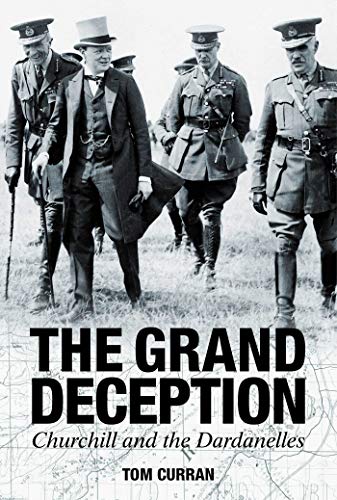Tom Curran examines the role of Winston Churchill, the First Sea Lord at the time, in decision making prior to the Gallipoli landings.

Churchill and the Dardanelles
Tom Curran Newport, NSW: Big Sky Publishing, 2015.
Hardcover 318pp. RRP: $34.99
Faced with stalemate on the Western Front, Churchill and Lloyd-George supported alternate strategies such as ‘knock away the props’, by attacking Germany’s allies; Fisher and Kitchener opposed extending the Front.
The Dardanelles campaign, which was originally to be a naval assault was supported halfheartedly by the War Council and the often-absent Prime Minister Asquith, who, unable to provide decisive leadership, sought to arbitrate between these opposing views, leading to procrastination and delay.
As specified in his introduction, Curran’s central hypothesis is that the Naval assault on the Dardanelles and hence the subsequent disastrous Gallipoli campaign, was undertaken essentially because Churchill deceived the Cabinet War Council.
The vilification of Churchill does not end there as the author also criticises him for meddling in operational aspects of the Royal Navy and for attempting to rewrite history in his post-war account titled “The World Crisis”. He is further criticised for his use of confidential government documents although previous authors including Fisher, Jellicoe and Kitchener had already used such documents in writing their own memoirs.
Churchill’s role in making both strategic and operational decisions before and during the Dardanelles campaign is presented in considerable detail. Curran presents his case through extensive references to many official documents and press releases. He even quotes extensively from “The World Crisis” although most often to allege inaccuracies or disinformation rather than to provide a counterpoint.
The Grand Deception does an excellent job of presenting the way that wartime leaders, including allied Prime Ministers, cabinet members, senior military figures and others communicated with and amongst each other, both officially and informally, during wartime. It does nothing to encourage support for, or confidence in any of them. The book cites several instances of War Council secrets being leaked, leaders refusing to communicate or share strategies with peers and subordinates and prioritising national or political goals over defeating the common enemy. But the documents referenced and quoted reveal communications from all levels of organisation that are vague and ambiguous in the extreme.
It is probably fair to say that consideration of any aspect of the Great War, from its causes to the Treaty of Versailles which concluded it, does not show the decision makers in a favourable light; and it is easy to see how Liddell-Hart concluded, ‘war commanders (of the Great War) had feet of clay and wooden skulls as well’. It is certainly true that where the ultimate failure of the Dardanelles and Gallipoli campaigns are concerned there is plenty of blame to go around.
The idea of forcing the Dardanelles and eliminating Turkey was one of the very few strategic concepts of World War I but did not get the consideration or support necessary to make it work.
Curran’s case is not convincing.
To accept his view of Churchill as deceiver is also to accept that characters such as Fisher, Kitchener, Asquith, Lloyd-George et al are weak, disinterested, irresolute and disingenuous and/or were in Churchill’s thrall; which may have been true of some of them at some times, but surely not all of them all of the time.
Curran further argues that Churchill subsequently attempted to discredit Fisher and Kitchener for their lack of commitment and support for the Dardanelles adventure when, in fact, several of his own references show both to be hesitant or non-committal and vacillating.
A common problem with military histories is maps which are difficult to read or inconsistent with the text. Pleasingly, this book includes two detailed maps which are both relevant and exceptionally clear.
There is also a large bibliography and extensive footnotes, indicating considerable research. A perfectly adequate index is attached but the photos are generally small and of poor quality.
Unfortunately there are so many references with minimal linking text that reading “The Grand Deception” is frequently tiresome and the uneven flow dilutes the strength of the authors case.
The book is derived from a PhD thesis document and often reads like one.
Finally, Curran devotes a whole chapter to the historiography, the history of the history, or, as he calls it, the ‘battle of the books’, in which he examines several authors, including Churchill himself, their publications and their effect on public perceptions in the decades since 1915. In fact this reader found this chapter to be the most interesting part of “The Grand Deception” and the book is recommended reading for this aspect alone.
Reviewed for RUSIV by Kevan Sanderson, July 2020
Contact Royal United Services Institute about this article.






